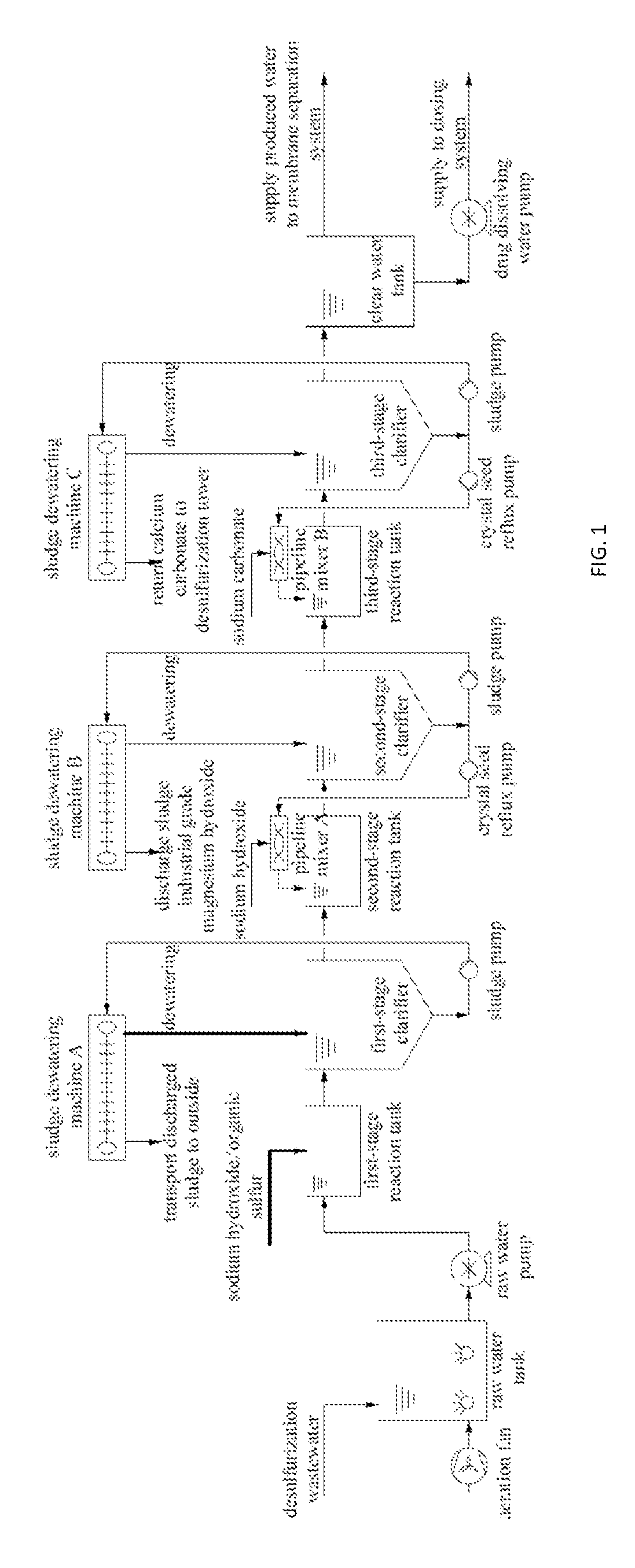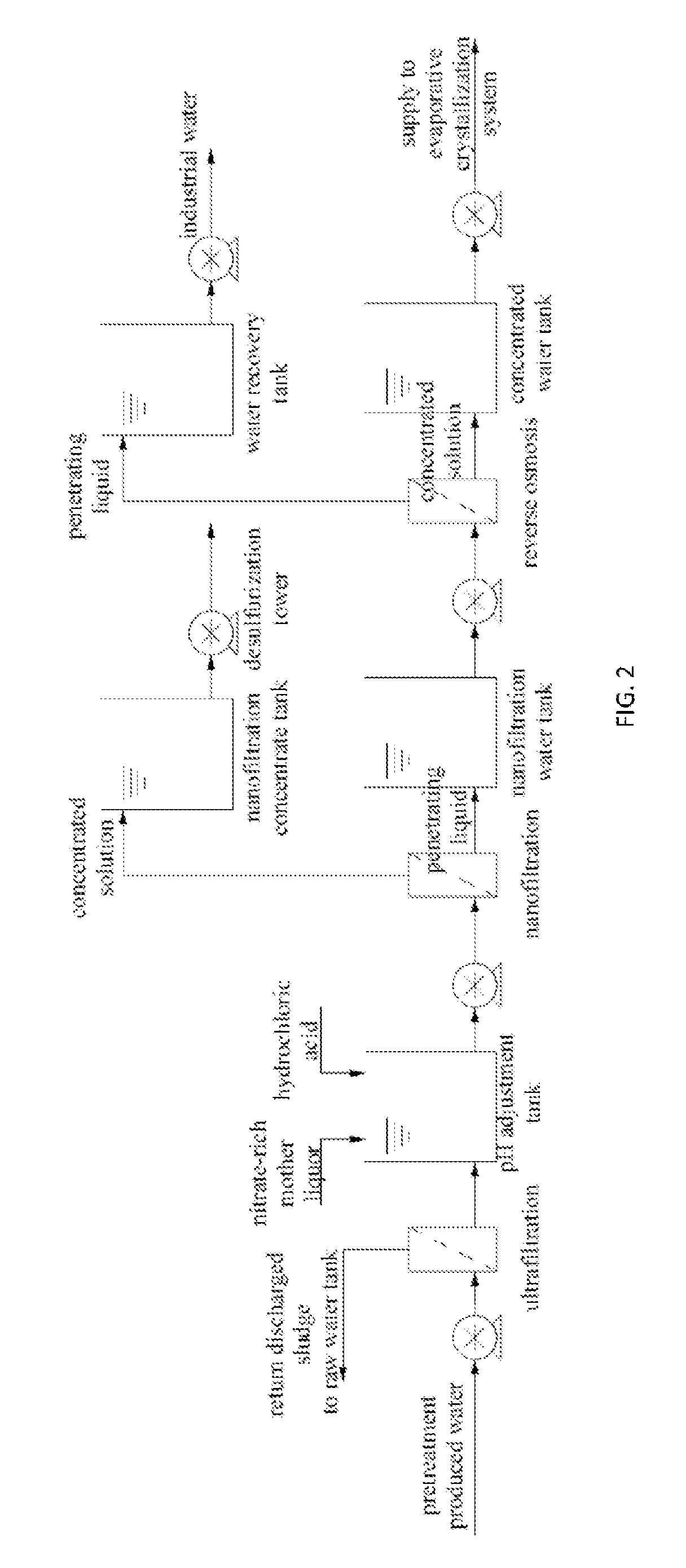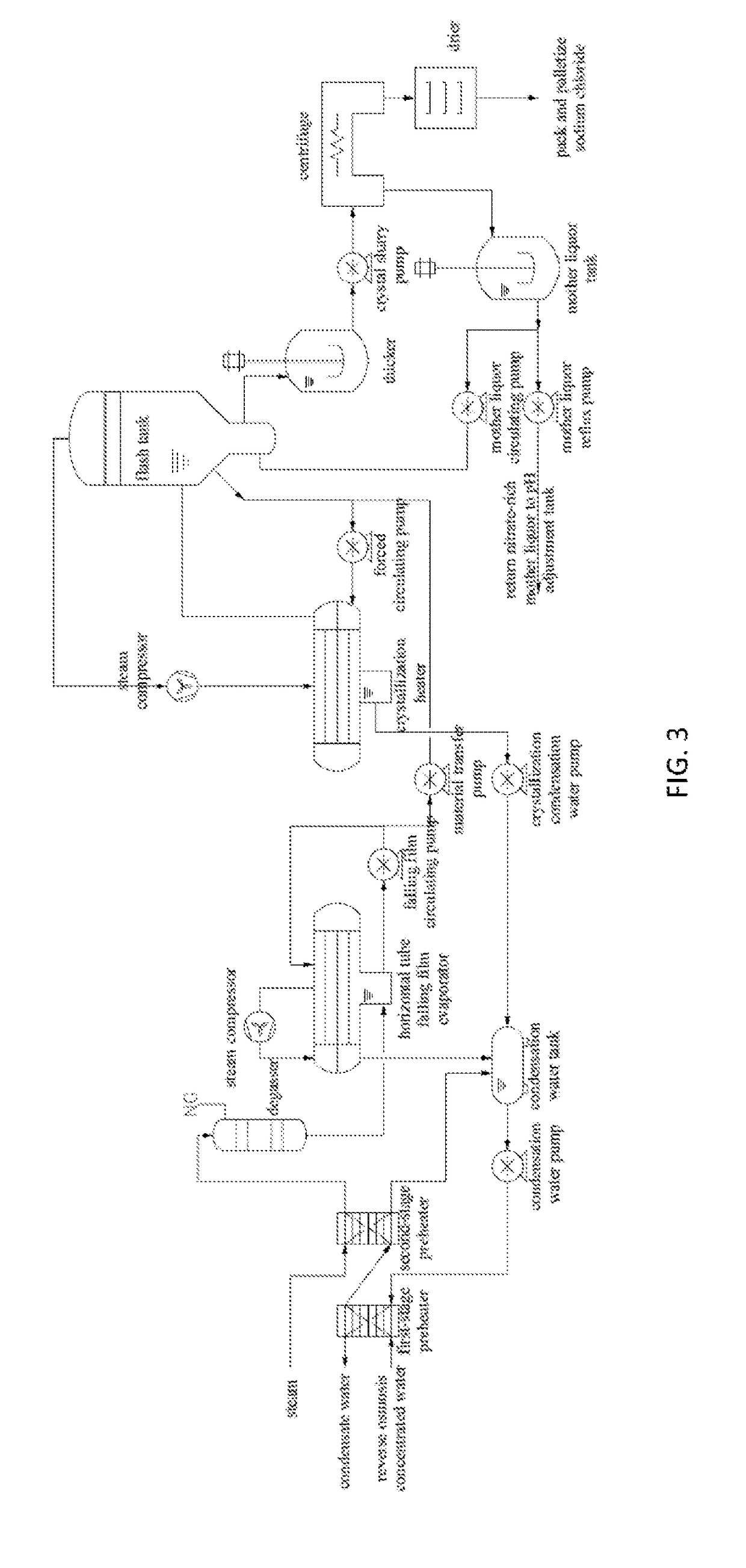Zero-discharge technique for separating sludge and salt from desulfurization wastewater
a technology of desulfurization wastewater and sludge, which is applied in the direction of water/sewage multi-stage treatment, water separation process, multi-stage treatment, etc., can solve the problems of not realizing zero discharge, only treating solid waste, complex components of by-products, etc., and achieves the reduction of project operating cost and the cost of sludge and mixed sal
- Summary
- Abstract
- Description
- Claims
- Application Information
AI Technical Summary
Benefits of technology
Problems solved by technology
Method used
Image
Examples
Embodiment Construction
[0047]A zero discharge process for separating sludge and salt from desulfurization wastewater of the present invention sequentially includes a pretreatment process, a membrane treatment process and an evaporative crystallization process as shown in FIG. 1 to FIG. 3:
[0048]As shown in FIG. 1, the pretreatment process:
[0049](1) the desulfurization wastewater enters a raw water tank, an aeration fan introduces compressed air into the raw water tank, COD of the incoming water is reduced to be less than 70 mg / L, and the wastewater is lifted to first-stage reaction and clarification by a raw water pump;
[0050](2) in the first-stage reaction and clarification, lime milk is added to a first-stage reaction tank, the pH value is adjusted to 8-9 under stirring conditions, iron, zinc, lead, nickel and chromium are produced into hydroxide precipitate, fluoride ions are produced into CaF2 precipitate, and silicon is produced into CaSiO3 precipitate; an appropriate amount of organic sulfur is added ...
PUM
| Property | Measurement | Unit |
|---|---|---|
| Fraction | aaaaa | aaaaa |
| Fraction | aaaaa | aaaaa |
| Fraction | aaaaa | aaaaa |
Abstract
Description
Claims
Application Information
 Login to View More
Login to View More - R&D
- Intellectual Property
- Life Sciences
- Materials
- Tech Scout
- Unparalleled Data Quality
- Higher Quality Content
- 60% Fewer Hallucinations
Browse by: Latest US Patents, China's latest patents, Technical Efficacy Thesaurus, Application Domain, Technology Topic, Popular Technical Reports.
© 2025 PatSnap. All rights reserved.Legal|Privacy policy|Modern Slavery Act Transparency Statement|Sitemap|About US| Contact US: help@patsnap.com



